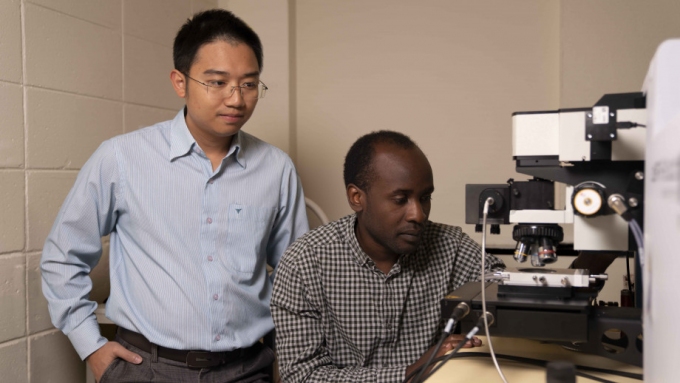Researchers Dr Hieu Nguyen and PhD Candidate Mike Tebyetekerwa from the ANU Research School of Electrical, Energy and Materials Engineering have been working to revolutionise solar cell technology, through ultra-thin 2D materials.
Dr Nguyen said, “one day a car window or a cell phone screen could harvest sunlight to help power itself”.
The team developed this innovation in solar technology, while trying to demonstrate the maximum voltage achievable through light absorption for the single-atom-thin materials.
“These monolayers are hundreds of thousands times thinner than a human hair. If they were coated on your car windows, cell phone screen, or even your watch, you would barely see them,” Dr Nguyen said.
The researchers used a surprisingly low tech material – sticky tape, and a spectroscopic microscope to calculate the material’s maximum potential.
“We started with a big material and just used the tape to ‘exfoliate’ layer by layer, until only a single layer of atoms remained,” PhD candidate Mike Tebyetekerwa said.
“This gives us the most pristine form of the material, allowing us to truly understand its real potential.”
The team then studied the light emitted from the various materials using a microscope equipped with a sensitive camera and detector.
“This way we can just ‘look’ at the materials, and predict their potential performance based on the properties of the detected light,” Mr Tebyetekerwa said.
The results show ultra-thin, extremely lightweight, transparent monolayers should be suitable for high-voltage solar cells.
“It is exciting that something almost invisible to the naked eye can still absorb sunlight and efficiently convert it into electricity” said Dr Nguyen.
This research could potentially increase the amount of surfaces open to solar harvesting, including everyday household items and even large scale applications like building windows.
Advancement in solar research is central to increasing access to sources of renewable energy and redressing key factors of climate change.
Read the full story on ANU Media.

